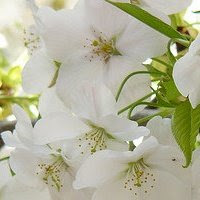|
Kumamoto Ramen
A special character of this ramen is its thick soup made from the boiled bones of pigs and chikens, and fat Chinese noodles. Many specialized ramen can be found in kumamoto town, each of which has developed its own unique taste.
Higo Beef
Higo Beef comes from Japanese brown cows raised in Kumamoto. The brown cows graze on the tender grass of the plains of Aso from early summer to auntum. This particular beef is now recognized as a low-fat, healthy meat.
Kuma Shochu
Japanese spirits distilled from good quality rice using crystalline underground water of Kuma River. The drink boasts a peculiar flavor and taste, excellent body that doesn’t leave behind the bad effects often associated with drinking.
Karashi Renkon
Lightly fried lotus root stuffed with spicy mustard. The characteristic crips and pugent tastes assail one’s nose as you prepare to dine on this delicacy.
Basashi Marbled horse meat eaten by dipping it in soy sauce mixed with ginger or garlic. Often so tender. It melts on your tongue.
Taipi-en
A dish that can only be found in Kumamoto. This bean-starch vermicelli dish uses a stock made by boiling chicken bones. It’s slightly seasoned, chock full of different ingredients, healthy and liked by many.
Product of the district
Higo Zogan
A craft peculiar to Kumamoto with a 400 year tradition. Various patterns are achieved by striking gold and silver into an iron plate. Pendants and tie-pins are popular items.
Kutami Uchiwa
Fans made of Japanese paper and covered with persimmon varnish retaining an air of the past. Their gracious color are unique in the Kutami Uchiwa.
Ceramic Art Articles
Numerous kilns in Kumamoto, such as Kodayaki and Shodaiyaki have a long cherished history of producing fine ceramic art pieces. They were financially supported by the Hosokawa clan.
Hanatebako
A typical hand-painted box made in the Hitoyoshi district. Depicting a stylized camellia motif.
Yamaga Toro
A traditional object of craft-work produced in YAmaga, a lantern made out of Japanese paper which has been hand-filtered and glue without using wood or metal pieces.
A special character of this ramen is its thick soup made from the boiled bones of pigs and chikens, and fat Chinese noodles. Many specialized ramen can be found in kumamoto town, each of which has developed its own unique taste.
Higo Beef
Higo Beef comes from Japanese brown cows raised in Kumamoto. The brown cows graze on the tender grass of the plains of Aso from early summer to auntum. This particular beef is now recognized as a low-fat, healthy meat.
Kuma Shochu
Japanese spirits distilled from good quality rice using crystalline underground water of Kuma River. The drink boasts a peculiar flavor and taste, excellent body that doesn’t leave behind the bad effects often associated with drinking.
Karashi Renkon
Lightly fried lotus root stuffed with spicy mustard. The characteristic crips and pugent tastes assail one’s nose as you prepare to dine on this delicacy.
Basashi Marbled horse meat eaten by dipping it in soy sauce mixed with ginger or garlic. Often so tender. It melts on your tongue.
Taipi-en
A dish that can only be found in Kumamoto. This bean-starch vermicelli dish uses a stock made by boiling chicken bones. It’s slightly seasoned, chock full of different ingredients, healthy and liked by many.
Product of the district
Higo Zogan
A craft peculiar to Kumamoto with a 400 year tradition. Various patterns are achieved by striking gold and silver into an iron plate. Pendants and tie-pins are popular items.
Kutami Uchiwa
Fans made of Japanese paper and covered with persimmon varnish retaining an air of the past. Their gracious color are unique in the Kutami Uchiwa.
Ceramic Art Articles
Numerous kilns in Kumamoto, such as Kodayaki and Shodaiyaki have a long cherished history of producing fine ceramic art pieces. They were financially supported by the Hosokawa clan.
Hanatebako
A typical hand-painted box made in the Hitoyoshi district. Depicting a stylized camellia motif.
Yamaga Toro
A traditional object of craft-work produced in YAmaga, a lantern made out of Japanese paper which has been hand-filtered and glue without using wood or metal pieces.







